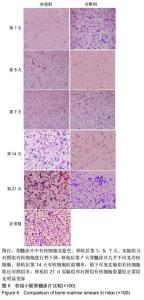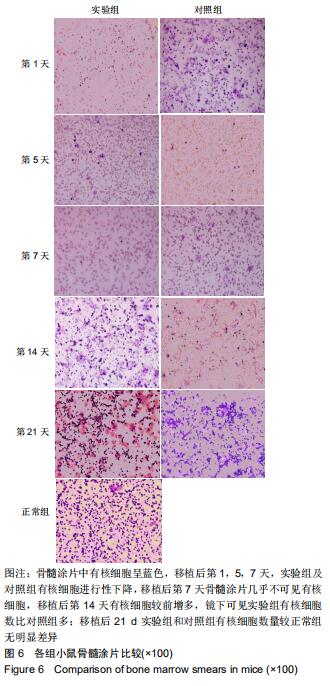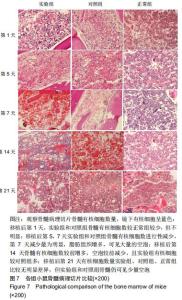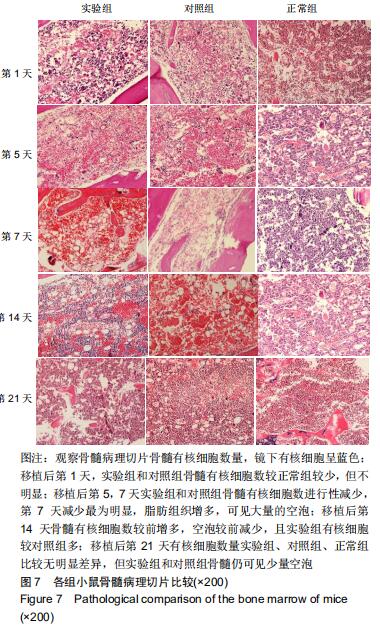|
[1] SPRADLING A, DRUMMOND-BARBOSA D, KAI T. Stem cells find their niche. Nature. 2001;414(6859):98-104.
[2] LUCAS D. The Bone Marrow Microenvironment for Hematopoietic Stem Cells. Adv Exp Med Biol. 2017;1041:5-18.
[3] 张之南.协和血液病学[M].北京:中国协和医科大学出版社,2004:25.
[4] KUÇI S, KUÇI Z, KREYENBERG H, et al. CD271 antigen defines a subset of multipotent stromal cells with immunosuppressive and lymphohematopoietic engraftment-promoting properties. Haematologica. 2010;95(4):651-659.
[5] DAR A, GOICHBERG P, SHINDER V, et al. Chemokine receptor CXCR4-dependent internalization and resecretion of functional chemokine SDF-1 by bone marrow endothelial and stromal cells. Nat Immunol. 2005;6(10):1038-1046.
[6] WEISS ML, ANDERSON C, MEDICETTY S, et al. Immune properties of human umbilical cord Wharton's jelly-derived cells. Stem Cells. 2008;26(11):2865-2874.
[7] 张积华,孙康,王妍,等.脐血间充质干细胞生物学特性及其成骨成脂分化潜能[J].中国组织工程研究与临床康复,2010,14(27): 4984-4987.
[8] WEISS ML, MEDICETTY S, BLEDSOE AR, et al. Human umbilical cord matrix stem cells: preliminary characterization and effect of transplantation in a rodent model of Parkinson's disease. Stem Cells. 2006;24(3):781-792.
[9] WEIR C, MOREL-KOPP MC, GILL A, et al. Mesenchymal stem cells: isolation, characterisation and in vivo fluorescent dye tracking. Heart Lung Circ. 2008;17(5):395-403.
[10] SCHORMANN W, HAMMERSEN FJ, BRULPORT M, et al. Tracking of human cells in mice. Histochem Cell Biol. 2008; 130(2):329-338.
[11] 张曦,司英健,陈幸华,等.Co60 γ辐照对裸鼠血像及造血微环境功能影响的动态观察[J].检验医学与临床,2008,5(3):129-132.
[12] 汪姝玥,林凡莉,钱怡,等.不同共培养模式下间充质干细胞对造血干细胞增殖的作用[J].中国组织工程研究,2018,22(13):2068-2074.
[13] 张曦,陈幸华,刘林.外周血干细胞移植患者骨髓基质细胞粘附功能的变化[J].医学研究生学报,2003,16(8):590-593.
[14] 胡锴勋,孙琪云,艾辉胜,等.间充质干细胞治疗急性骨髓型放射病的实验研究[J].中华放射医学与防护杂志,2005,25(3):221-224.
[15] WALENDA T, BOKERMANN G, VENTURA FERREIRA MS, et al. Synergistic effects of growth factors and mesenchymal stromal cells for expansion of hematopoietic stem and progenitor cells. Exp Hematol. 2011;39(6):617-628.
[16] ZHANG C, CHEN XH, ZHANG X, et al. Human umbilical cord blood-derived stromal cells: a new resource in hematopoietic reconstitution in mouse haploidentical transplantation. Transplant Proc. 2010;42(9):3739-3744.
[17] MATSUOKA Y, NAKATSUKA R, SUMIDE K, et al. Prospectively Isolated Human Bone Marrow Cell-Derived MSCs Support Primitive Human CD34-Negative Hematopoietic Stem Cells. Stem Cells. 2015;33(5):1554-1565.
[18] PONTIKOGLOU C, DESCHASEAUX F, SENSEBÉ L, et al. Bone marrow mesenchymal stem cells: biological properties and their role in hematopoiesis and hematopoietic stem cell transplantation. Stem Cell Rev Rep. 2011;7(3):569-589.
[19] OVERHOLT KM, OTSURU S, OLSON TS, et al. Identification of a murine CD45-F4/80lo HSC-derived marrow endosteal cell associated with donor stem cell engraftment. Blood Adv. 2017; 1(27):2667-2678.
[20] CAO B, ZHANG Z, GRASSINGER J, et al. Therapeutic targeting and rapid mobilization of endosteal HSC using a small molecule integrin antagonist. Nat Commun. 2016;7:11007.
[21] 尹利明,赵燕娜,杜文喜,等.人参总皂苷增强成骨分化的间充质干细胞促造血作用研究[J].中国药理学通报,2015,31(1):45-49.
[22] BARACHINI S, TROMBI L, DANTI S, et al. Morpho-functional characterization of human mesenchymal stem cells from umbilical cord blood for potential uses in regenerative medicine. Stem Cells Dev. 2009;18(2):293-305.
[23] MARKOV V, KUSUMI K, TADESSE MG, et al. Identification of cord blood-derived mesenchymal stem/stromal cell populations with distinct growth kinetics, differentiation potentials, and gene expression profiles. Stem Cells Dev. 2007;16(1):53-73.
[24] WANG TT, TIO M, LEE W, et al. Neural differentiation of mesenchymal-like stem cells from cord blood is mediated by PKA. Biochem Biophys Res Commun. 2007;357(4):1021-1027.
[25] PITTENGER MF, MACKAY AM, BECK SC, et al. Multilineage potential of adult human mesenchymal stem cells. Science. 1999; 284(5411):143-147.
|























